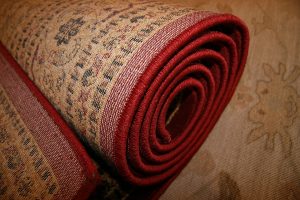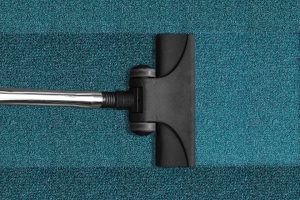When it comes to carpets and rugs, you can’t just roll them up, put them in a corner somewhere and call it a day. Improperly stored, carpets can lose their shape, become infested with pests and acquire unpleasant odors. That is not to say you must keep every carpet or rug you own strewn around the house. If you’re relocating and looking for moving services Florida but can’t take everything with you immediately, carpets can be one of the things you pack away in storage. You just have to learn how to store rugs and carpets properly! Here’s a step-by-step guide that should make it quite simple to do just that.
Why is it important to learn how to store rugs and carpets?
Quality rugs and carpets can be difficult to find and quite expensive depending on the size and material. But if you take good care of them, they can last you for years. However, if you store them improperly they can get damaged in a variety of ways. They could lose shape or color, suffer water or pest damage, and start smelling weird.

But let’s say you’re moving. You have researched reliable moving and storage Florida and found that putting some of your stuff in storage for a while is the best idea. When that time comes, you want to know how to properly store rugs and carpets so they’ll be ready to use again when you need them in your new home!
How to store rugs and carpets: a simplified guide
Storing rugs and carpets isn’t that difficult when you break it down into steps. You won’t even need many supplies. Most of what you need are things you already have lying around the house. You just need to remember these 6 important steps:
- thoroughly clean the rug
- protect the rug from insects like moths and carpet beetles
- roll the rug up tightly
- wrap the rolled up rug into a protective material like fabric or plastic
- store the rug in a cool and dry place
- regularly check the rug for damage
If you follow these steps, your rugs will be safe and sound even in storage!
How to store rugs and carpets step by step
As you figure out the layout for your new home, you may want to take some of your rugs and carpets out of storage and use them. At that point, you would rather have those carpets well preserved. So we should probably elaborate a little on those steps on how to store rugs and carpets properly!
Clean thoroughly
You should always start with giving the rug a proper cleaning. Vacuuming is generally a good first step. You will use it to remove most of the dirt and debris from the carpet. If the carpet is particularly delicate, precious or valuable, use some of the lower settings on your vacuum cleaner and be gentle.

After that, you should follow the manufacturer’s instructions on how to clean the rug. Some materials can be machine washed while others require a more delicate touch. Check the label on your rug or look up online on how to handle the specific material.
Woven or braided rugs
Woven or braided rugs are generally washable, as long as you use a gentle cycle and low settings for tumble drying. If the rug is too big to fit into your machine, laying them on a concrete floor and sponging them clean with carpet cleaning foam will work too.
Handmade, hand-knotted, antique and oriental rugs
Handmade, hand-knotted, antique and oriental rugs are more delicate. Vacuum them through a piece of nylon screen and follow the sellers instructions on how to clean them further.
Coir, sisal, rush and grass rugs
Rugs made of natural fibers need to be cleaned regularly. Vacuum them often and use a soft brush with soapy water for stains. Make sure to speed up the drying by blotting out the dampness or using a blow dryer. This will make them last longer!
Fur, sheepskin and hair-on hides
These rugs are a bit specific! Clean them by covering them in unscented talcum powder for a few hours and them brushing or shaking it out.
Protect from insects
Depending on the place of storage, you may not need to take the extra step of protecting your rugs and carpets from moths, carpets beetles, and other insects. But it certainly won’t hurt! Use a moth and insect repellent intended for fabrics according to the manufacturer’s instructions.

Roll tightly
Rolling the carpet into a cylinder is the best way to avoid creases and cracks. In general, you will roll so that the back of the carpet ends up exposed because it tends to be the less delicate side, but this isn’t always the rule. However, you end up rolling, make sure the cylinder is as straight and even as possible.
Wrap for protection
When you store rugs and carpets, you want to protect them from the outside elements like dust and water. This is where wrapping them comes in handy! Use a breathable fabric like cotton or muslin, but avoid plastic as it won’t allow the carpet to air out.
Store in the right place
It is important to pick the right place to store rugs and carpets. Whether you’re keeping them in an attic, a basement, a rented storage unit or just the back of a closet, always keep the place cool, dry and away from direct sunlight. Put the rolled up carpet somewhere off the ground to avoid damage from elements. Don’t put anything on top of carpets either or you might crack them and ruin their shape.
Check the condition regularly
Try to check up on your rugs and carpets regularly, just to make sure that they are in good condition. Keep the area around them clean and vacuumed. Once a month, take the time to unroll them. That way you can check for bugs, clean any potential dust and make sure there are no cracks or other signs of damage.
